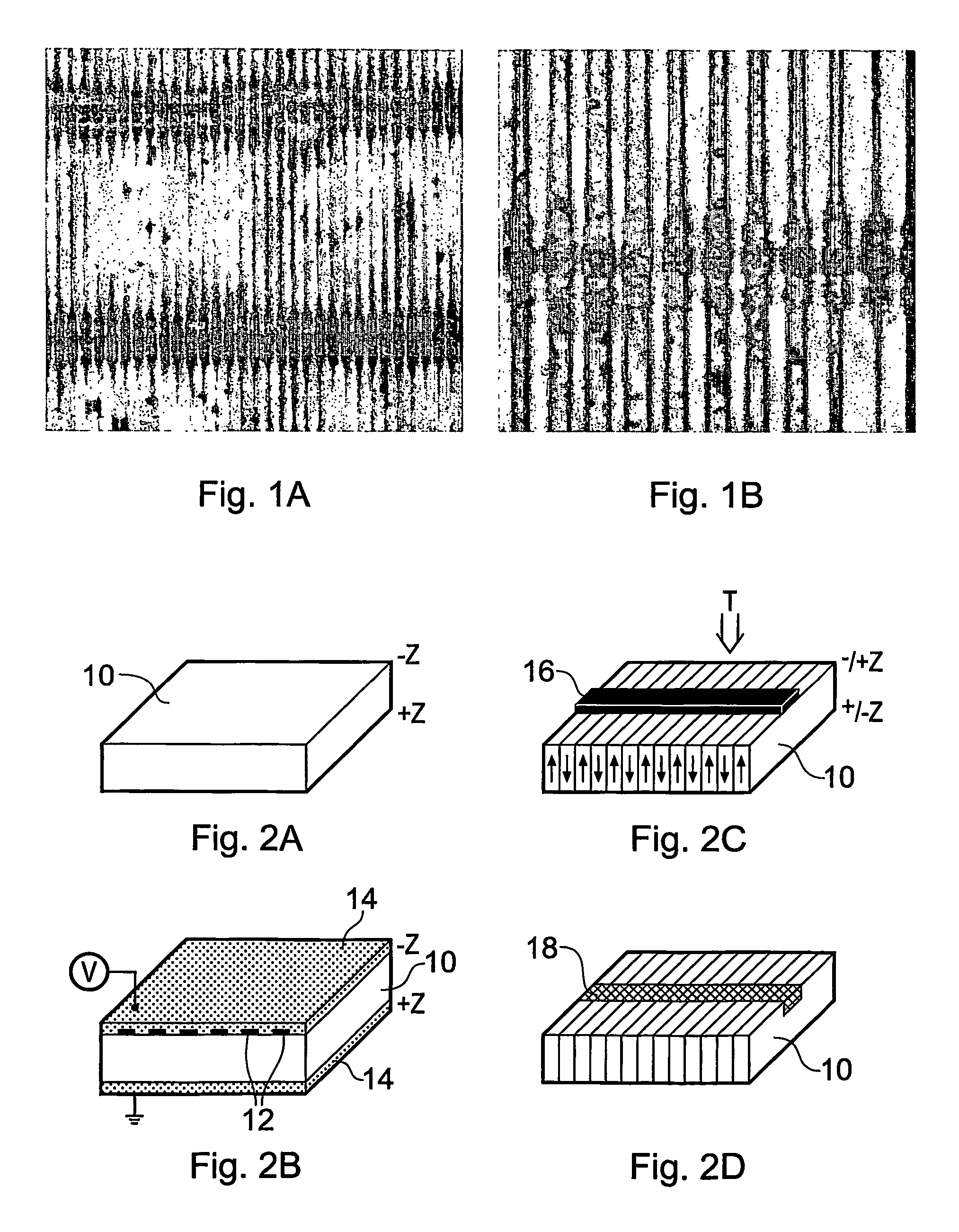Fabrication of optical waveguides in periodically poled lithium niobate
a technology of lithium niobate and fabrication technology, applied in the direction of optics, optical light guides, instruments, etc., can solve the problems of lithium niobate being particularly vulnerable, poling after diffusion can be problematic, unattainable via proton exchange, etc., to achieve maximum device efficiency, optimise poling yield, and high grating yield
- Summary
- Abstract
- Description
- Claims
- Application Information
AI Technical Summary
Benefits of technology
Problems solved by technology
Method used
Image
Examples
Embodiment Construction
[0024] In order to create a standardised route towards creating high-quality zinc-diffused waveguides in electric-field-poled PPLN crystals, two distinct fabrication routes can be considered. A first approach is based on the assumption that it is possible to periodically pole the lithium niobate crystals after the zinc indiffusion process. This approach is analogous to that used in the technique of titanium diffusion in lithium niobate.
[0025] Therefore, attempts were made to periodically-pole high-temperature zinc-diffused LiNbO3. However, these attempts were judged to be unsuccessful owing to the presence of a thin Li2O out-diffusion induced domain-inverted layer on the +z face of the crystal, which blocks subsequent electric field poling. This is similar to the case for poling titanium-diffused LiNbO3.
[0026]FIGS. 1A and 1B show microscope images (at different magnifications) of an example result of poling a previously zinc-diffused LiNbO3 sample. The domain structure of the pole...
PUM
| Property | Measurement | Unit |
|---|---|---|
| temperatures | aaaaa | aaaaa |
| widths | aaaaa | aaaaa |
| width | aaaaa | aaaaa |
Abstract
Description
Claims
Application Information
 Login to View More
Login to View More - R&D
- Intellectual Property
- Life Sciences
- Materials
- Tech Scout
- Unparalleled Data Quality
- Higher Quality Content
- 60% Fewer Hallucinations
Browse by: Latest US Patents, China's latest patents, Technical Efficacy Thesaurus, Application Domain, Technology Topic, Popular Technical Reports.
© 2025 PatSnap. All rights reserved.Legal|Privacy policy|Modern Slavery Act Transparency Statement|Sitemap|About US| Contact US: help@patsnap.com



